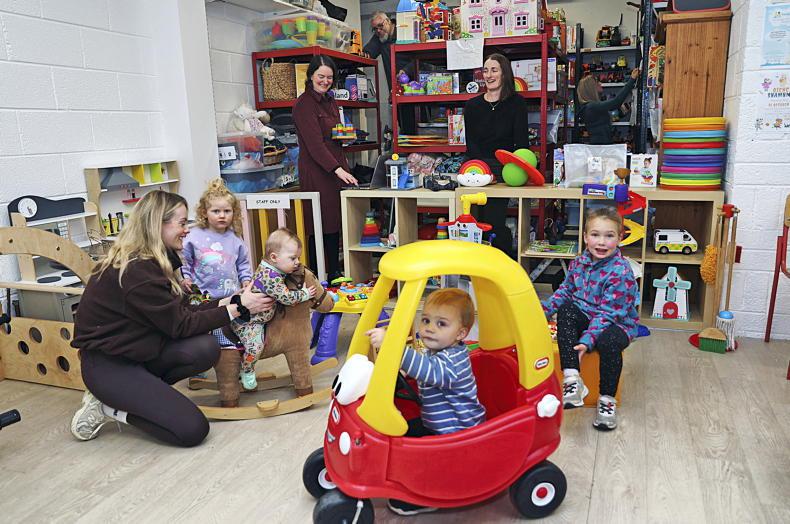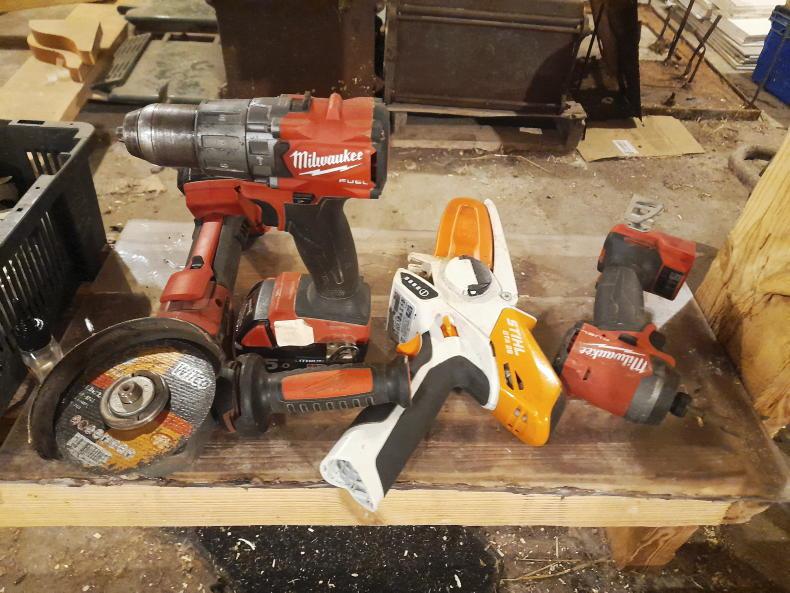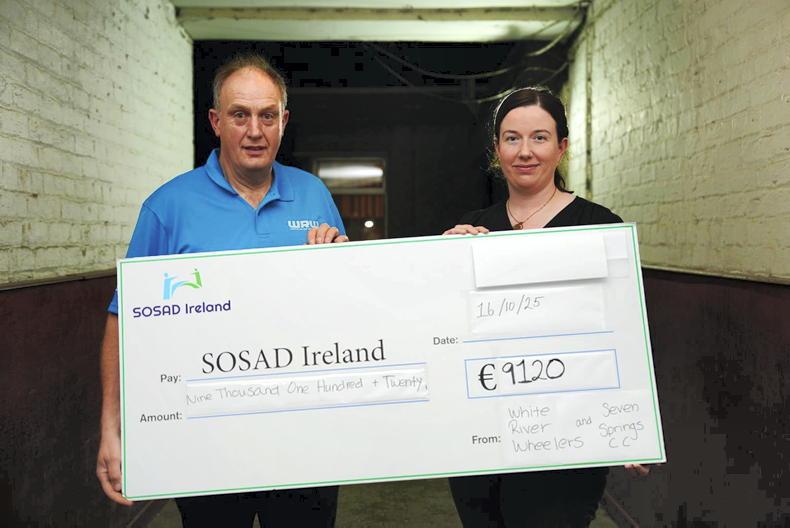It is difficult for many people to understand – that anyone would want to hurt themselves physically, that is, cut, burn or wound their bodies. That this is done to alleviate mental distress may seem even harder to understand. Inflicting pain to relieve pain? Is that what’s happening?
“Yes, for some people, harming themselves, creating physical pain, harming themselves can be a way of managing extreme emotional upset,” says Beverley Cummins, Lead Therapist with Pieta- the suicide and self-harm prevention charity- in their Galway, Tuam and Ballina centres.
“The physical pain may reduce mental tension or provide a distraction or escape from emotional pain like anger or hurt.”
She admits that it is not easy for many people to comprehend.
“It is difficult to understand, but this behaviour may serve these different functions for some people.”
On the increase
Beverley has seen a significant increase in people presenting with self-harm since she started work as a therapist.
“I started 20 years ago with the NHS. Self-harm was something that not many people did then,” she says. “The most recent evidence is that at least 10% of the population will start in adolescent years and will report that they self-harm. That is a big percentage of people self-harming in our communities.”
So, what can the increase be attributed to?
There are a variety of reasons, she says, but the main one is the impact of social media on young people’s lives.
“If I think back to when I was a child, life was very simple. There wasn’t technology, there wasn’t social media. We can’t put the blame totally on these, but the world has definitely changed and I do think it’s tougher. There is no escape from social media where people can comment. In the past, no one could comment publicly like that. In the past for many people, home was a safe place but the world is in our homes now.”
Parents’ reactions
Discovering that your child or teenager is self-harming can be traumatic for parents.
“From the experience of families that I’ve worked with, parents experience a whole range of emotions, from anger to sadness to shame, even disgust, to hopelessness,” she says. “It’s important to remember that it’s normal to feel all those strong emotions. It can be frightening trying to figure out what your child is so upset about that they would want to self-harm, too.”
She advises parents to be kind to themselves.
“It’s about accepting that it’s okay to feel all these emotions,” she says. “You’ve just found something out about your child that’s really distressing and you can feel helpless and hopeless. Often it can help to remember that this is a behaviour, that it’s being used as an expression of an emotion that they can’t handle. It’s then about being available to them on an emotional level, not going in and being the authoritarian and the expert in this because it’s about the individual’s emotions.”
What to do
Often when we find out something about our child, we immediately want to problem solve it right now, she states, but this may not be helpful.
“We might not be able to do anything about this right now [e.g. if the cause was bullying in school]. It might be about looking at how things can change in six months, in a year, and helping the teenager to build up resilience. Yes, it is very complicated. Through time, through getting on that journey alongside of them, you will work through it and start to help them think about their problems and maybe see some solutions or maybe solutions that you might have to get involved in too.”
Building emotional resilience
Professional support is available from Pieta.
“Teenagers can access us through the helpline, 24 hours a day,” she says. “They can also text to access the intervention side of our services. That’s where we offer weekly sessions with a therapist looking at solutions-focussed, strength-based interventions to help build up emotional resilience. The parent would need to refer the young person for this and the young person would need to agree that they want to attend so therefore both the parent and the young person would attend Pieta for the sessions.”
Pieta now offers this counselling therapy in 22 locations around the country and also phone or video sessions if preferred.
“We offer short-term therapy, generally of 12 sessions, with a review after six to find out what’s been helpful, what hasn’t been and to look at what we are going to work on next.”
What happens in therapy?
Pieta therapists start at the beginning, she says, hearing the person’s story.
“We hear where the client is at and go with them on that journey of listening, perhaps to the hopelessness they’re feeling at that time. We’re working at building that relationship up and also looking at what positive things they have in their life as the positives are very important. As the sessions go on, then, we are looking at what the problem is and then helping them with problem solving, at what steps need to be taken to improve the situation.”
Therapy involves helping the adolescent to look at their lives as a whole.
“We work on the wider picture, the wider story [of what their lives are like] to help lower those self-harm thoughts and behaviours.”
Managing emotions
An important initial stage of therapy is looking at how people manage their emotions, she says.
“We look at how they manage setbacks in life, for example, if they didn’t do as well in their exams. We look at them developing social networks, at being optimistic, at learning to love themselves and find their voice in school. Role playing situations [like telling parents they are self-harming] can also be helpful in building up courage and strength. It’s important to remember that recovery is possible with professional help.”
Self-harm and suicide ideation- is there a link?
The first thing that a parent may think when they find that their child is self-harming is that they are trying to take their life, but is this the case?
“One of the things I always say ?is to remember that self-harm doesn’t have to lead on to suicide and while we can’t say that it doesn’t in all cases, in most cases it doesn’t.”
She advocates being informed and everyone knowing the signs for suicide, however, as stated in Pieta’s Know The Signs campaign. See https://www.pieta.ie/how-we-can-help/signs-of-suicide/
So, what can parents do to help?
Distraction
“The best way to support your child or family member or sibling or even adults [who are self-harming] is to organise activities that you can do together, what we call healthy distraction techniques.
“It’s about not bringing up the self-harming behaviour immediately, but asking the questions. Ask ‘is anything worrying you’ and ‘is there anything I can help you with’ and ‘how are you feeling?’ Try to find out what’s going on for them and be prepared to listen.”
Technology can actually come in handy here, she says.
“If they don’t want to talk, you can send them a text, an email or write them a letter even, if they are unable to put into words what’s going on for them.”
Widen the circle
Pieta therapists also talk about healthy lifestyles and getting involved in voluntary work and serving in the community. They are also great advocates of children and teenagers having a wide circle of friends.
“Joining youth clubs or sports clubs or doing volunteer work with Tidy Towns, for example, helps us to see what skills we’ve got and helps us to meet other people who can be positive influences on us,” Beverley adds.
“For young people, often their friends are all in one place – school – so if that friendship group becomes difficult, life is difficult, because they are with them in school and outside school and on social media. If we can go somewhere else and meet different people, we get to see that the world is a bit bigger. We have more perspective.”
Days out
Beverley also recommends simple days out.
“I’m a great one for the idea of packing a picnic up on a nice day and getting out for a walk and away from phones.”
First aid - know what to do
Helping someone who has self-harmed can involve a knowledge of first aid.
“There are different types of injuries and we should know how to help,” she says. “With cuts and wounds, if they are deep, we might need to apply pressure – and seek medical help. The wounds would need to be checked also to make sure they don’t become infected. With burns, cold water is needed to cool it down. Again, medical attention may be needed if the burns are severe or are not getting better.
“If self-harm takes the form of an overdose, it means going straight to the Emergency Department.”
But is there resistance to going to the doctor?
“I say that going to the doctor is the place to go because they will look after you medically. The doctor may not know what to do on that emotional level, but they can signpost you to professionals such as ourselves. Medical care is about reducing any infections, about making sure people are not poorly from the self-harm.”
Statistics
In 2020, 224 per 100,000 women and 176 per 100,000 men presented at hospital because of self-harm. The peak age for females self-harming was in the 15-19 age group and in males, the 25-29 age group. To learn more visit https://www.pieta.ie/how-we-can-help/are-you-self-harming/
Pieta
24 hr crisis helpline - call 800 247 247. Text Pieta therapists if you are in crisis: Text HELP to 51444. Start your therapy journey today and call 0818 111 126
Jigsaw
The young people’s mental health support charity, also has some very helpful advice on this subject. See https://jigsaw.ie/self-harm/
Samaritans
Also, the Samaritans can be contacted free on 116 123.
Read more
A wheel dilemma: should you be on or off the road?
Think, talk and tell - why it’s so important
It is difficult for many people to understand – that anyone would want to hurt themselves physically, that is, cut, burn or wound their bodies. That this is done to alleviate mental distress may seem even harder to understand. Inflicting pain to relieve pain? Is that what’s happening?
“Yes, for some people, harming themselves, creating physical pain, harming themselves can be a way of managing extreme emotional upset,” says Beverley Cummins, Lead Therapist with Pieta- the suicide and self-harm prevention charity- in their Galway, Tuam and Ballina centres.
“The physical pain may reduce mental tension or provide a distraction or escape from emotional pain like anger or hurt.”
She admits that it is not easy for many people to comprehend.
“It is difficult to understand, but this behaviour may serve these different functions for some people.”
On the increase
Beverley has seen a significant increase in people presenting with self-harm since she started work as a therapist.
“I started 20 years ago with the NHS. Self-harm was something that not many people did then,” she says. “The most recent evidence is that at least 10% of the population will start in adolescent years and will report that they self-harm. That is a big percentage of people self-harming in our communities.”
So, what can the increase be attributed to?
There are a variety of reasons, she says, but the main one is the impact of social media on young people’s lives.
“If I think back to when I was a child, life was very simple. There wasn’t technology, there wasn’t social media. We can’t put the blame totally on these, but the world has definitely changed and I do think it’s tougher. There is no escape from social media where people can comment. In the past, no one could comment publicly like that. In the past for many people, home was a safe place but the world is in our homes now.”
Parents’ reactions
Discovering that your child or teenager is self-harming can be traumatic for parents.
“From the experience of families that I’ve worked with, parents experience a whole range of emotions, from anger to sadness to shame, even disgust, to hopelessness,” she says. “It’s important to remember that it’s normal to feel all those strong emotions. It can be frightening trying to figure out what your child is so upset about that they would want to self-harm, too.”
She advises parents to be kind to themselves.
“It’s about accepting that it’s okay to feel all these emotions,” she says. “You’ve just found something out about your child that’s really distressing and you can feel helpless and hopeless. Often it can help to remember that this is a behaviour, that it’s being used as an expression of an emotion that they can’t handle. It’s then about being available to them on an emotional level, not going in and being the authoritarian and the expert in this because it’s about the individual’s emotions.”
What to do
Often when we find out something about our child, we immediately want to problem solve it right now, she states, but this may not be helpful.
“We might not be able to do anything about this right now [e.g. if the cause was bullying in school]. It might be about looking at how things can change in six months, in a year, and helping the teenager to build up resilience. Yes, it is very complicated. Through time, through getting on that journey alongside of them, you will work through it and start to help them think about their problems and maybe see some solutions or maybe solutions that you might have to get involved in too.”
Building emotional resilience
Professional support is available from Pieta.
“Teenagers can access us through the helpline, 24 hours a day,” she says. “They can also text to access the intervention side of our services. That’s where we offer weekly sessions with a therapist looking at solutions-focussed, strength-based interventions to help build up emotional resilience. The parent would need to refer the young person for this and the young person would need to agree that they want to attend so therefore both the parent and the young person would attend Pieta for the sessions.”
Pieta now offers this counselling therapy in 22 locations around the country and also phone or video sessions if preferred.
“We offer short-term therapy, generally of 12 sessions, with a review after six to find out what’s been helpful, what hasn’t been and to look at what we are going to work on next.”
What happens in therapy?
Pieta therapists start at the beginning, she says, hearing the person’s story.
“We hear where the client is at and go with them on that journey of listening, perhaps to the hopelessness they’re feeling at that time. We’re working at building that relationship up and also looking at what positive things they have in their life as the positives are very important. As the sessions go on, then, we are looking at what the problem is and then helping them with problem solving, at what steps need to be taken to improve the situation.”
Therapy involves helping the adolescent to look at their lives as a whole.
“We work on the wider picture, the wider story [of what their lives are like] to help lower those self-harm thoughts and behaviours.”
Managing emotions
An important initial stage of therapy is looking at how people manage their emotions, she says.
“We look at how they manage setbacks in life, for example, if they didn’t do as well in their exams. We look at them developing social networks, at being optimistic, at learning to love themselves and find their voice in school. Role playing situations [like telling parents they are self-harming] can also be helpful in building up courage and strength. It’s important to remember that recovery is possible with professional help.”
Self-harm and suicide ideation- is there a link?
The first thing that a parent may think when they find that their child is self-harming is that they are trying to take their life, but is this the case?
“One of the things I always say ?is to remember that self-harm doesn’t have to lead on to suicide and while we can’t say that it doesn’t in all cases, in most cases it doesn’t.”
She advocates being informed and everyone knowing the signs for suicide, however, as stated in Pieta’s Know The Signs campaign. See https://www.pieta.ie/how-we-can-help/signs-of-suicide/
So, what can parents do to help?
Distraction
“The best way to support your child or family member or sibling or even adults [who are self-harming] is to organise activities that you can do together, what we call healthy distraction techniques.
“It’s about not bringing up the self-harming behaviour immediately, but asking the questions. Ask ‘is anything worrying you’ and ‘is there anything I can help you with’ and ‘how are you feeling?’ Try to find out what’s going on for them and be prepared to listen.”
Technology can actually come in handy here, she says.
“If they don’t want to talk, you can send them a text, an email or write them a letter even, if they are unable to put into words what’s going on for them.”
Widen the circle
Pieta therapists also talk about healthy lifestyles and getting involved in voluntary work and serving in the community. They are also great advocates of children and teenagers having a wide circle of friends.
“Joining youth clubs or sports clubs or doing volunteer work with Tidy Towns, for example, helps us to see what skills we’ve got and helps us to meet other people who can be positive influences on us,” Beverley adds.
“For young people, often their friends are all in one place – school – so if that friendship group becomes difficult, life is difficult, because they are with them in school and outside school and on social media. If we can go somewhere else and meet different people, we get to see that the world is a bit bigger. We have more perspective.”
Days out
Beverley also recommends simple days out.
“I’m a great one for the idea of packing a picnic up on a nice day and getting out for a walk and away from phones.”
First aid - know what to do
Helping someone who has self-harmed can involve a knowledge of first aid.
“There are different types of injuries and we should know how to help,” she says. “With cuts and wounds, if they are deep, we might need to apply pressure – and seek medical help. The wounds would need to be checked also to make sure they don’t become infected. With burns, cold water is needed to cool it down. Again, medical attention may be needed if the burns are severe or are not getting better.
“If self-harm takes the form of an overdose, it means going straight to the Emergency Department.”
But is there resistance to going to the doctor?
“I say that going to the doctor is the place to go because they will look after you medically. The doctor may not know what to do on that emotional level, but they can signpost you to professionals such as ourselves. Medical care is about reducing any infections, about making sure people are not poorly from the self-harm.”
Statistics
In 2020, 224 per 100,000 women and 176 per 100,000 men presented at hospital because of self-harm. The peak age for females self-harming was in the 15-19 age group and in males, the 25-29 age group. To learn more visit https://www.pieta.ie/how-we-can-help/are-you-self-harming/
Pieta
24 hr crisis helpline - call 800 247 247. Text Pieta therapists if you are in crisis: Text HELP to 51444. Start your therapy journey today and call 0818 111 126
Jigsaw
The young people’s mental health support charity, also has some very helpful advice on this subject. See https://jigsaw.ie/self-harm/
Samaritans
Also, the Samaritans can be contacted free on 116 123.
Read more
A wheel dilemma: should you be on or off the road?
Think, talk and tell - why it’s so important









SHARING OPTIONS